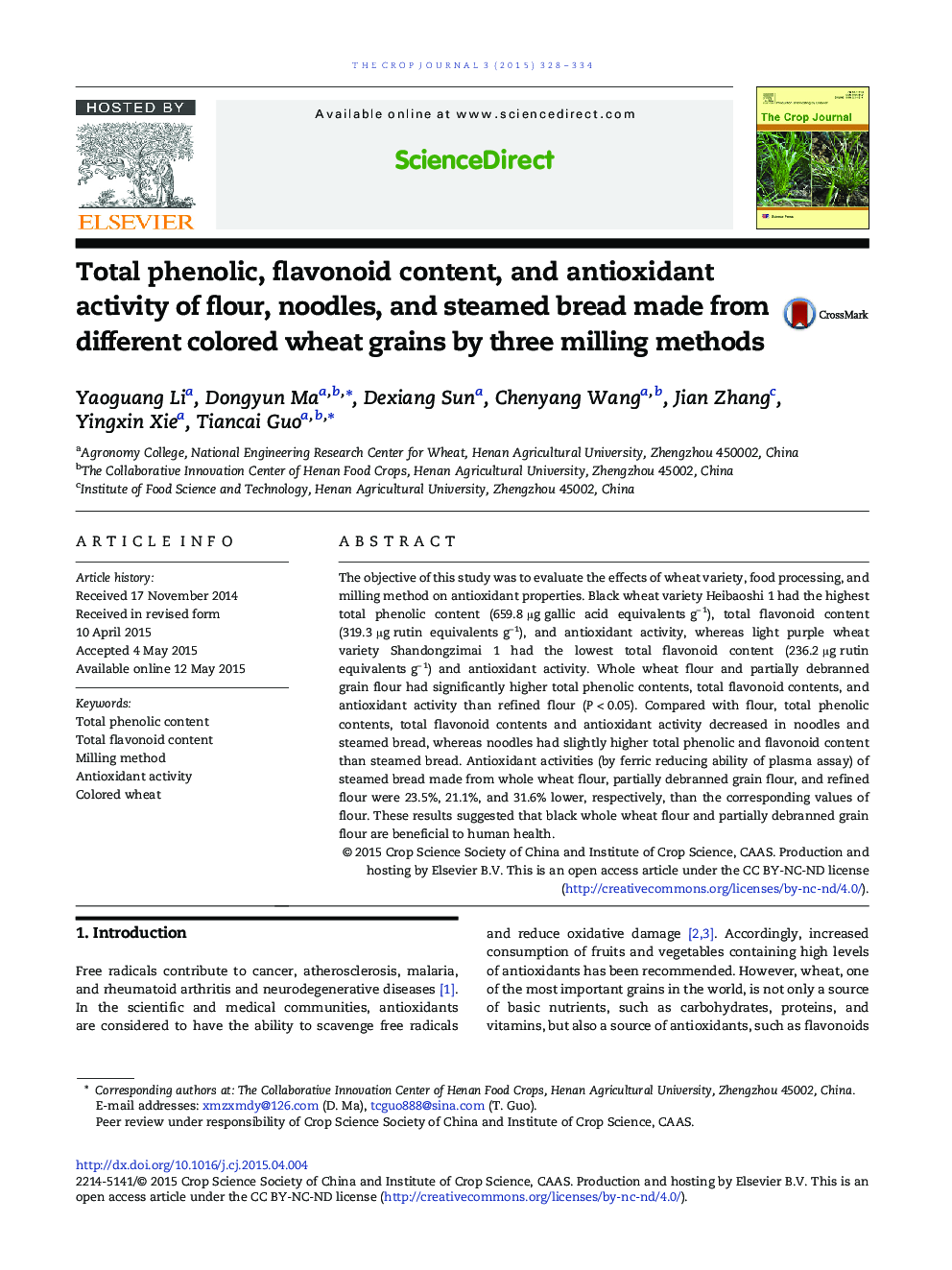| Article ID | Journal | Published Year | Pages | File Type |
|---|---|---|---|---|
| 2079459 | The Crop Journal | 2015 | 7 Pages |
The objective of this study was to evaluate the effects of wheat variety, food processing, and milling method on antioxidant properties. Black wheat variety Heibaoshi 1 had the highest total phenolic content (659.8 μg gallic acid equivalents g− 1), total flavonoid content (319.3 μg rutin equivalents g− 1), and antioxidant activity, whereas light purple wheat variety Shandongzimai 1 had the lowest total flavonoid content (236.2 μg rutin equivalents g− 1) and antioxidant activity. Whole wheat flour and partially debranned grain flour had significantly higher total phenolic contents, total flavonoid contents, and antioxidant activity than refined flour (P < 0.05). Compared with flour, total phenolic contents, total flavonoid contents and antioxidant activity decreased in noodles and steamed bread, whereas noodles had slightly higher total phenolic and flavonoid content than steamed bread. Antioxidant activities (by ferric reducing ability of plasma assay) of steamed bread made from whole wheat flour, partially debranned grain flour, and refined flour were 23.5%, 21.1%, and 31.6% lower, respectively, than the corresponding values of flour. These results suggested that black whole wheat flour and partially debranned grain flour are beneficial to human health.
